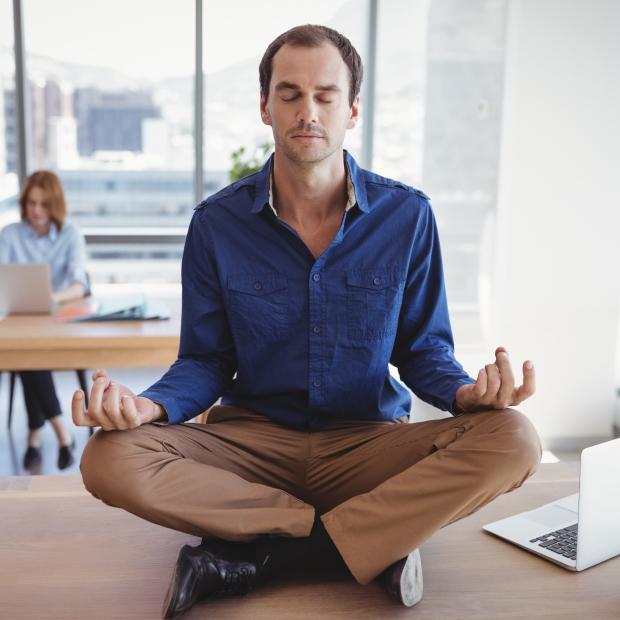
Since “sitting is the new smoking” made headlines in 2013, sitting has been linked to serious health risks, including cancer, heart disease, diabetes, and depression. Yet, while there’s no doubt that sedentary behavior is unhealthy, new research has found that the answer isn’t as simple as just standing up.
Prolonged Sitting Is Risky Behavior
The health risks of a sedentary lifestyle are well known:
- Type 2 diabetes
- Heart attack and cardiovascular disease
- Cancer
- Obesity and metabolic syndrome
- Deconditioning (loss of muscle strength)
- Depression
- Nearly 50% increased risk of death from any cause
According to the World Health Organization, sedentary behavior is the 4th-leading risk factor for death around the world.
New Research Says It’s Not Sitting by Itself That Matters
If sitting is bad, should we just stand up instead? Unfortunately, standing for long periods has its own consequences: varicose veins, back pain, foot problems, and excessive wear-and-tear on hips, knees, and ankles.
Now, research is showing that sitting by itself isn’t the issue. A new study based at the University of Sydney in Australia analyzed data from thousands of subjects in the famous long-term Whitehall II Study in England in a new way: Researchers looked at not just the total amount of sitting, but at whether different types of sitting were linked with type 2 diabetes. Once obesity, physical activity, and other risk factors were accounted for, little evidence linked total sitting time to diabetes risk—only for people who were physically inactive overall, or both inactive and obese, was total sitting time related to developing diabetes.
The researchers concluded that 2 factors make sitting a risk factor in its own right: the type and context of sitting. Sitting at work isn’t strongly linked with long-term health risks, possibly because more sitting links to higher-status jobs, and a higher socioeconomic position links to a lower risk of chronic disease—indeed, the Whitehall subjects who sat a lot also did a lot of walking, around 45 minutes per day on average.
By contrast, sitting while watching TV was closely linked with long-term health risks like type 2 diabetes, heart disease, and early death—along with lower socioeconomic status, unemployment, poorer mental health, and an unhealthy diet.
“There’s far more at play than we previously realized when it comes to sedentary behaviors and the health risks associated with extended sitting,” says lead Sydney researcher Dr. Emmanuel Stamatakis. Previous studies have rarely accounted for the effects of other conditions on participants’ health risks, he says, so more research that includes those risk factors is needed before sitting alone can be blamed.
Don’t Demonize Sitting: Just Take Time to Move, Too
While prolonged sitting is correlated with serious health conditions, no research has yet shown whether—or how—how one causes the other. Given how much many of us are obliged to sit during a given day, more research would help us develop healthier habits.
In the meantime, more and more scientists are recommending that we make time to move throughout the day—stretching, walking, whatever—to avoid the risks posed by inactivity at any age. As WebMD says, we “don’t have to demonize sitting.” By breaking it up with regular movement, we can avoid its pitfalls.
- Grab any chance to stand, like during phone calls.
- Use a standing desk or adjustable surface at work—or stand up and stretch or walk around for a few minutes every half hour.
- Use a smaller glass or coffee cup and get up to go for refills more often. Try taking a walk at lunch.
- Try walking meetings—researchers have found that walking actually helps us think better and more creatively.
- When watching TV, stand up or walk around during commercials.
- Get a good night’s sleep. Sleep deprivation can encourage inactivity.
A Little Motion Does a Lot of Good
While researchers work on sitting and health risks, the rest of us can work on moving more during the day; moving burns more calories, which can increase our energy (and maybe even help shed some pounds). Research shows that people who sit less tend to become more active overall…and that’s a healthy cycle that can do us all a lot of good.
Resources
We used these articles as resources for this topic—check them out yourself to learn more about how to counteract the health risks posed by sitting and inactivity.
Emmanuel Stamatakis, “Why sitting is not the ‘new smoking,’” TheConversation.com, Feb. 15, 2017. Accessed Apr. 27, 2017.
Ferris Jabr, “Why Walking Helps Us Think,” The New Yorker, Sep. 3, 2014. Accessed May 4, 2017.
James A. Levine, “What are the risks of sitting too much?” Mayo Clinic Answers, MayoClinic.com. Accessed Apr. 27, 2017.
Jen Christensen, “Sitting will kill you, even if you exercise,” CNN.com, Apr. 30, 2015. Accessed Apr. 27, 2017.
Kathleen Doheny, “Sitting Too Much: How Bad Is It?” WebMD.com. Accessed Apr. 27, 2017.
Mary Keratos, “Sitting is NOT that bad for you: Study slams claims that ‘sitting is the new smoking,’” Daily Mail.com, Feb. 6, 2017. Accessed Apr. 27, 2017.
Örebro Universitet, “A brisk walk instead of sitting down: Just 10 minutes a day makes a difference,” ScienceDaily.com, May 3, 2017. Accessed May 4, 2017.
Teena Maddox, “Is sitting really the new smoking? An in-depth discussion with the experts,” TechRepublic.com, Oct. 7, 2016. Accessed Apr. 25, 2017.









